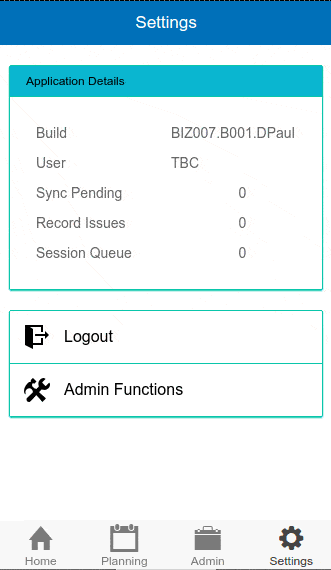The MobileCaddy shell applications are our bare-bone applications that we are putting together to give you a useful, yet lightweight, starting point when developing an offline application for Salesforce.
The shell apps give you a project structure and a set of proposed tools. They are available for a growing number of JavaScript frameworks. For example the Ioinic shell App (built using the Ionic Framework/SDK) looks like this and is initially set up to use NPM for it’s dependency management and Grunt as it’s task runner.
|
1 2 3 4 5 6 7 8 9 10 11 12 13 14 15 16 17 18 19 20 21 22 23 |
shell-ionic$ tree -L 2 . ├── Gruntfile.json // Grunt configuration ├── mock // Salesforce platform mocks can go here ├── node_modules // Dev tools installed by NPM ├── oauthcallback.html // Callback file used in oAuth flow ├── package.json // NPM package configuration ├── README.md ├── scss // SCSS │ ├── app.scss │ ├── ionic │ └── _mobilecaddy.scss ├── tests // Unit / E2E tests in here └── www // The app goes in here ├── css ├── fonts ├── index.html // Auto generated file ├── index.tpl.html // Template for index.html ├── js ├── lib └── templates |
As well as these proposals, and suggested starting config, the shell applications also come with some JS logic which supply a handy Settings section for your app. This includes our Mobile Table Inspector that gives you a handy window into the encrypted SmartStore. This can also be used as a base to enhance from in terms of adding further settings-type functionality.

Using our shell apps you can very quickly get yourself an app connected to the Salesforce platform and running with the MobileCaddy SDK.
If you use the shell apps but prefer to use other tools or libraries (that you’re perhaps more familiar with) such as swapping out Grunt for Gulp, then it’s no sweat at all.
Of course you don’t have to use a shell app and you can start completely fresh and just download the MobileCaddy SDK libraries, but if you’re just getting going then using one of our shell apps or seed apps is highly recommended. The Seed apps we provide are demo applications based upon our shell apps. These contain demo application logic that demonstrate further use of the MobileCaddy APIs and also common use-cases in the various JavaScript frameworks.
Get the MobileCaddy Shell Apps
Our Shell applications can be downloaded from our github repositories;
If you’d like to see a shell application for a framework that isn’t listed here please let us know.
Getting Started with a Shell App
Each shell app comes with detailed instructions in the README, but you can also visit our Getting Started page for detailed instructions.